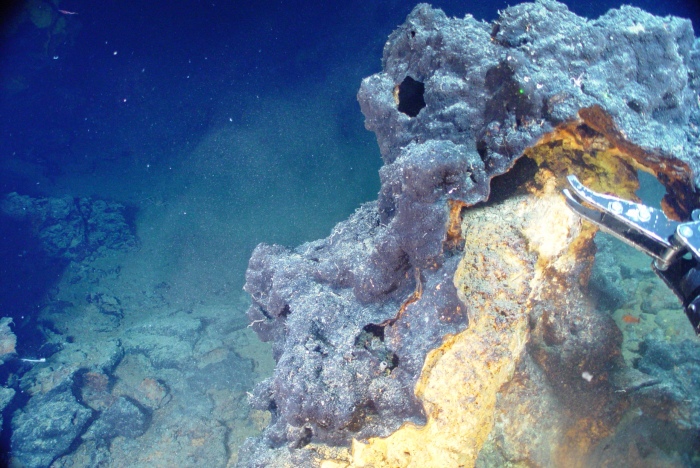Understanding the Great Unknowns and Preventing Permanent Harm to the Deep Ocean
Today, the journal Science published a paper by a group of deep sea experts, including me, calling for stewardship of our deep ocean.
Also, today, the International Seabed Authority closes its “stakeholder survey,” soliciting information about how to design a regulatory framework for deep seabed mineral exploitation. Driven by expanding interest in exploiting the deep ocean, the Seabed Authority is designing the legal framework that may determine the long-term health of the largest living space on Earth. Nations too are taking steps to lease their seabeds for mining activities. In light of these important legal developments, it is worth pausing to consider the special nature of the deep ocean and how to best manage it.
Scientists consider waters and seabed below 200 meters in depth as part of the deep ocean. It is a place of extremes—extreme size, extreme depth, extreme pressure, extreme darkness, and extreme unknowns. Yet human understanding of deep ocean ecosystems is considerably limited in comparison to the rest of Earth’s ecosystems. No doubt this lack of understanding is a result of the high cost, technology requirements, and dangers of working at depth.
While knowledge of the deep may be limited, human impact is ongoing. From intentional dumping, accidental spills, and land-based runoff, the deep sea bed and water column have been and are being polluted with anthropogenic waste. At the same time, human exploitation is moving deeper. Fishing vessels scour the deep with trawls. Oil and gas companies drill a mile below the sea. Mining companies explore the potential to extract manganese nodules across nation-sized swaths of the abyssal plains. Even the effects of climate change are already visible in the deep ocean.
As with all natural systems, the deep ocean ignores jurisdictional boundaries. The deep ocean is found in territorial seas, exclusive economic zones, continental shelves, and areas beyond national jurisdiction. In most instances, frameworks for managing deep ocean activities include general environmental laws or ocean laws, but few laws focus specifically on human activities in the deep ocean. Yet deep ocean environments share a suite of characteristics that make them special when considering how best to manage human impact to these regions.

Deep sea corals. Credit: NOAA.
Attributes of the deep ocean—from physical characteristics, to ecosystems, to research and monitoring—should inform management decisions. In particular, the overwhelming lack of information and high cost of research and monitoring are key attributes that should inform deep ocean management. These, combined with the recognition that many deep ocean ecosystems are slow to grow and once lost may never recover, should guide the development of key principles for deep ocean management.
In particular, I suggest two guiding principles for deep ocean management:
(1) The extreme limits of human knowledge of the deep ocean require minimization of human impact in order to avoid significant and permanent harm.
(2) Lack of knowledge of the deep ocean calls for mechanisms to expand deep ocean research in order to enable sound decision-making and expansion of appropriate utilization of the deep ocean.
With development of regulations for deep seabed mining underway in national and international waters, now is the time to take action to ensure that these new uses are developed in a way to protect and maintain the long-term health of the common heritage of mankind and the water column above it. We must take steps to understand the great unknowns and prevent permanent harm to the deep ocean.
****(Neither image was linked properly in the original Ocean Talk blog page.)****
